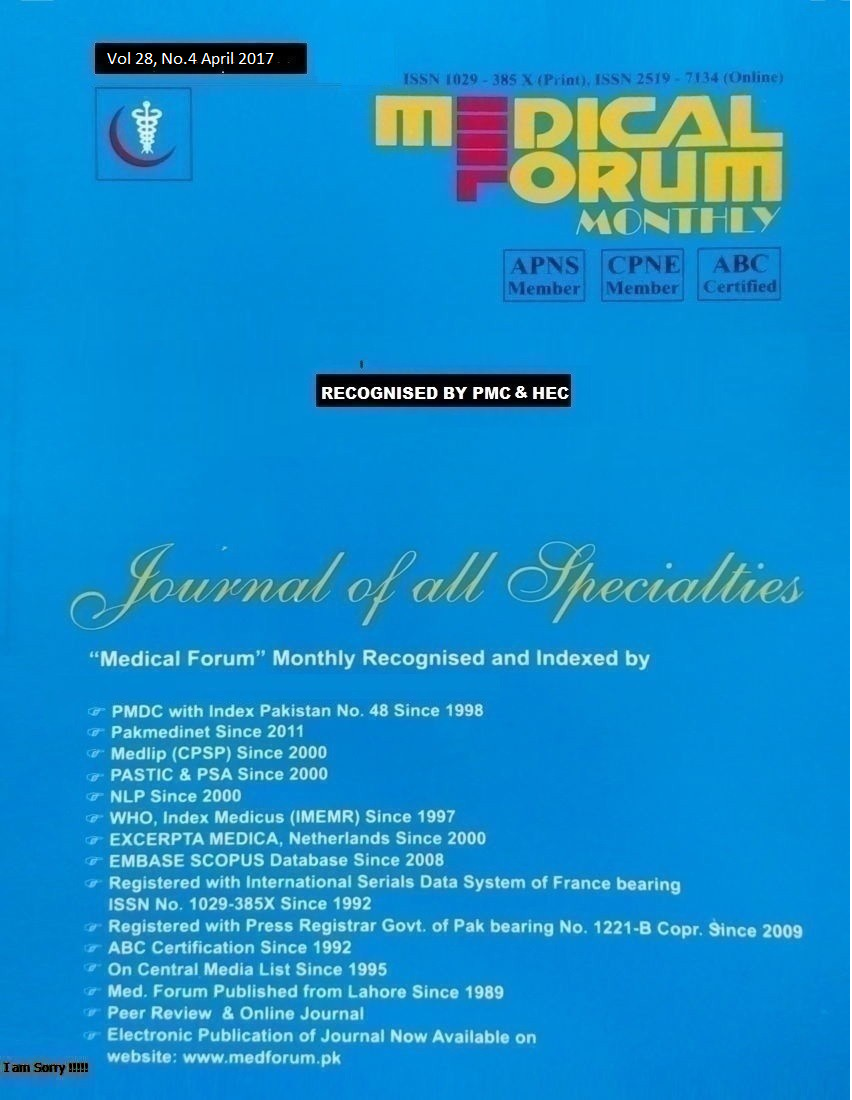
22. Outcome of Trial of Labour After Previous Single Caesarean Section
Shahana Yasmeen, Amna Faiz and Rabia Asif
ABSTRACT
Objectives: The aim of this study was to determine the frequency of successful trial of labour after previous cesarean section.
Study Design: Descriptive study
Place and Duration of Study: This study was conducted at the Obstetrics and Gynecological Units 1, Nishtar Hospital, Multan from July 1 to December 31, 2016.
Materials and Methods: One hundred and ninety five patients who have a trial of labour after a C section were included. Data entered and was analyzed from the SPSS 17 version.
Results: One hundred and ninety-five patients were included. The baseline characteristics of these patients were as follows: 105 (54%) were mostly in the age group between 25 and 29 years of age. 52 (27%) casers were in age groups between 20 24 years and 38 (19%) patients in the age group between 30-33 years of age. The average age was 25.75 ± 2.80 years. The average gestational age was 38.15 ± 0.70 weeks. The 78 (40%) cases were in gestational age 38 weeks. 76 (39%) of patients were with 39 weeks of gestation. 42 (22%) patients were gestational age 37 weeks. The success of trial of labour showed in Table 3. 154 (79%) patients have a successful trial. Most of the patients 138(71%) had natural vaginal delivery, 41(21%) with delivery by C section.
Conclusion: This study shows that patients who were undergone by of labour after previous C section is safe due to non-relapse and have a success rate of 78%, which is encouraging. Therefore, it is said that vaginal delivery after cesarean delivery should be given to the selected patients as much as possible in the hospital with 24-hour facility to run the theater and blood transfusion services.
Key Words: Trial labor; vaginal delivery; cesarean section uterine rupture.
Citation of article: Yasmeen S, Faiz A, Asif R. Outcome of Trial of Labour After Previous Single Caesarean Section. Med Forum 2017;28(4):
